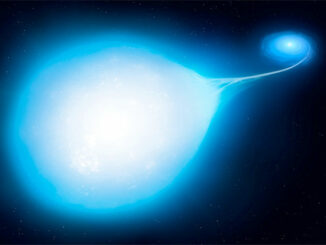
The Apollo astronauts set the human speed record, leaving Earth orbit on flights to the moon at some 10,800 metres per second (24,000 mph). But astronauts would have to fly more than 900 times faster to equal velocities measured in the Kepler supernova remnant where knots of debris are racing through space at up to 37 million kph (23 million mph).
The extremely high speeds measured by NASA’s Chandra X-ray Observatory are even more remarkable considering the Type 1a supernova in question, 20,000 light years away, became naked-eye visible in Earth’s sky nearly four centuries ago.
A team led by Matthew Millard at the University of Texas at Arlington tracked the movement of 15 small knots of debris in the Kepler supernova remnant by analysing recent Chandra X-ray spectra and combining those results with data collected in 2000, 2004, 2006 and 2014.
The fastest knot was moving at 37 million kph while the average is about 8.7 million kph. The team used the Doppler effect to measure the speed of each knot with respect to the line of sight from Chandra, estimating each knot’s actual speed in three-dimensional space.
Credit: NASA/CXC/Univ of Texas at Arlington/M. Millard et al.
The measured speeds are similar to those seen in optical observations of supernovae in other galaxies within days or weeks of an explosion. Supernova remnants typically form decades later. It’s not yet clear how such high velocities might be explained this long after the initial blast.
It could be the result of an unusually powerful Type 1a supernova, in which a compact white dwarf pulls in material from a companion, reaches a critical mass and explodes in a runaway thermonuclear explosion. Or the extreme velocities could be the result of the environment around the doomed star where areas of lower density might have permitted some material to expand outward relatively unimpeded.
The latest Chandra observations improve on a 2017 study that also attempted to locate the companion star that might have been left behind after the blast. No bright stars have been found near the center of the remnant, leading researchers to suspect the explosion was triggered by the merger of two white dwarfs.



